October Fiber Picks
Mapping a Territory
Broadway Gallery
On view till Oct 19th, 2024
“Broadway is pleased to present Mapping the Territory, our first exhibition with Los Angeles Artist Teresa Baker (Mandan, Hidatsa, b. 1985). Baker’s wall-based works are made primarily from artificial turf that is subsequently adorned with a variety of materials from acrylic paint to deerskin, yarn and willow branches. The astroturf support is first cut into asymmetrical shapes reminiscent of animal hides and the cartographic borders suggested by the show’s title. It is precisely at this juncture of the most basic material expression of “land”, and its subsequent adornment with materials providing cultural specificity, that the work accrues meaning. The slippage between base commercial mediums and the gravity of natural ones echoes Baker’s confluence of Native tradition with those of Modernism in painting. The slyly persistent geometry of her compositions creates a productive friction with their overall abandonment of the rectilinear support. A similar tension occurs between a commitment to pure abstraction and the unavoidable suggestion of the natural world, whether it be the flat expanse of a prairie landscape or the infinite night sky.
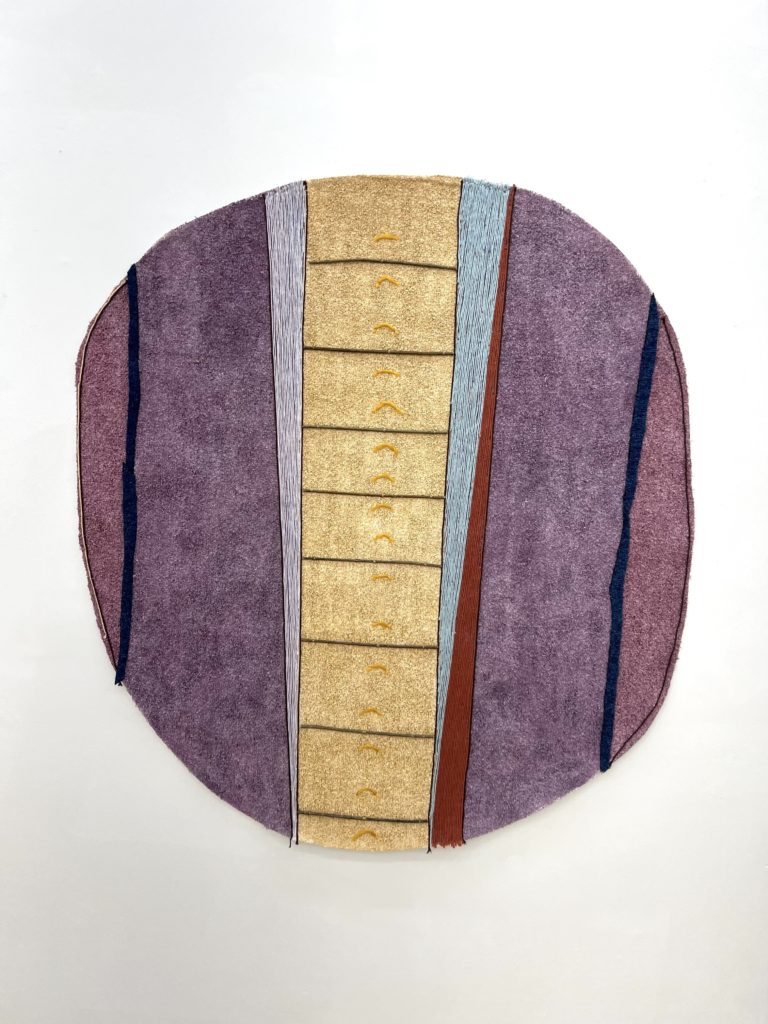
In this sense, Baker achieves a sublime beauty that is supported by a tripartite scaffold of pure form, a peculiar materiality, and an atmospheric, loosely representational approach.”
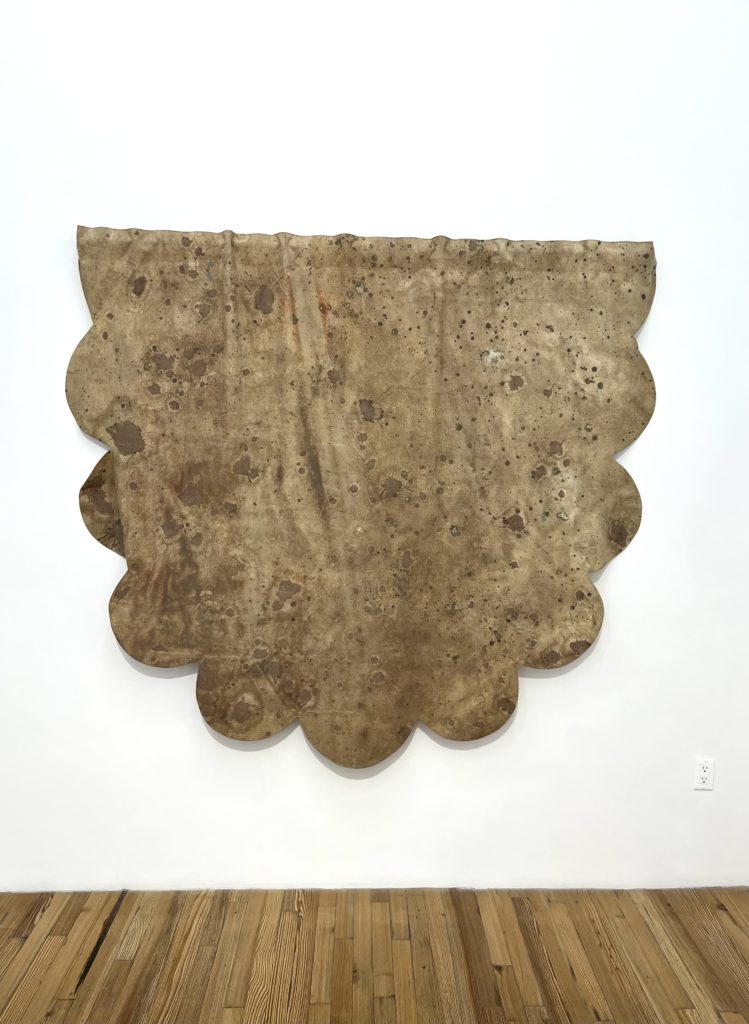
New Curtain Bangs
Andrew Kreps Gallery
On view till Oct 19th, 2024
“Fredrik Vaerslev’s latest body of work consists of large strips of painted cotton (i.e., canvas) arranged and displayed as sets of bunched-up curtains.
Firstly: on the basic level of biography, these works reference one of the artist’s oldest aesthetic experiences: a primal, prelingual sense that his mother’s choice of bright
colors and brash patterns for covering up his childhood home’s windows had something deliberately “artful” about it. Art, in young Vaerslev’s mind, began with the look and feel of certain curtains – and that’s as close as one would get to the idea of art in smalltown Norway in the 1980s. Over the years, such biographical details have grown in importance in making sense of the artist’s caustic, workaday experiments in high-end painterly abstraction. And no such detail is of greater consequence, in this regard, than the social charge of these formative experiences – which are, inevitably, a matter of class.
Secondly: on the slightly more elevated level of the artist’s continuing interrogation of the codes and conventions that constitute the expanded field of painting, Vaerslev’s curtain paintings seem to question the age-old metaphor of painting as a window onto the world – any window, any world. Perhaps these paintings are the very curtains designed to sabotage this epochal dream of total transparency instead? What if painting isn’t a window on the world – but a screen (aha!) draped across this very window? These questions recall some of the best-known curtains in twentieth-century painting, namely the dull brown pair framing the canvas inside René Magritte’s iconic La condition humaine (1933), which depicts a painted landscape obscuring the actual landscape, hinted at through the window frame seen in the background, after which it is painted. The curtain is the mise-en-abîme of the seeing mind – of spirit bedeviled by scopophilia (“what’s behind this?”), so to speak.
Thirdly, and finally: on the Olympian level of founding myths and memes, the legend of the fifth-century Greek painter Zeuxis as recounted in Pliny the Elder’s Natural History comes to mind: “The contemporaries and rivals of Zeuxis were Timanthes, Androcydes, Eupompus, and Parrhasius. This last, it is said, entered into a pictorial contest with Zeuxis, who represented some grapes, painted so naturally that the birds flew towards the spot where the picture was exhibited. Parrhasius, on the other hand, exhibited a curtain, drawn with such singular truthfulness, that Zeuxis, elated with the judgment which had been passed upon his work by the birds, haughtily demanded that the curtain should be drawn aside to let the picture be seen. Upon finding his mistake, with a great degree of ingenuous candor he admitted that he had been surpassed, for that whereas he himself had only deceived the birds, Parrhasius had deceived him, an artist.” This story lies at the basis of many themes and tropes that have helped shape the history of painting, not the least of which pertains to the “scandal” of realism – but the one that concerns us most here is the ancient notion that drapery allowed artists to show off their skill and mastery of the material at hand, which has led some commentators to suggest a “secret history of painting” in which the figuring of drapery (curtains and the like) helped pave the way for the advent of abstraction in art. (Sure.)
Let’s think of it as art’s ultimate curtain call: there may be “nothing to see here.” Or not.”
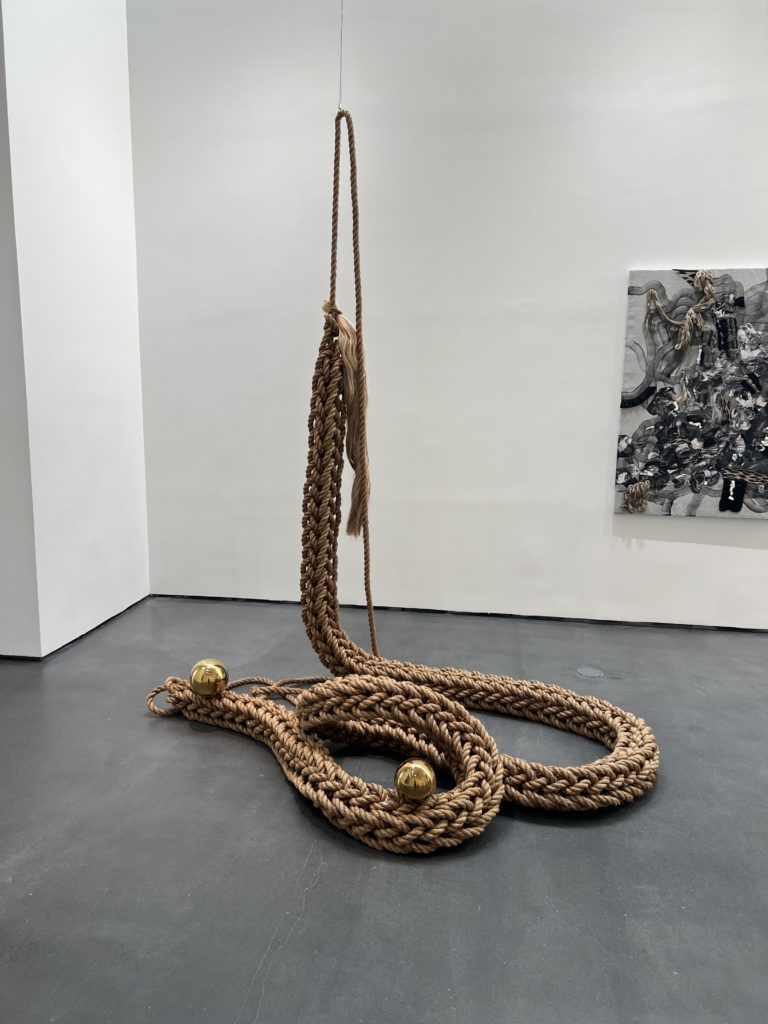
Emporium
Silverlens
On view till Oct 19th, 2024
“Silverlens New York is pleased to present a solo exhibition by Philippine artist Patricia Perez Eustaquio opening on September 5, 2024. The first artist to be represented by the gallery in Manila, Eustaquio debuts her tapestry works in the United States with Emporium, which also marks the first-ever representation of the artist’s all-new series of large-scale woven rope sculptures. This body of work epitomizes Eustaquio’s exploration of “marginalized materials” from the fields of craft and design—textile, fibers, ceramics, glass—and how meaning and perception become flexible through the transformation and translation of these materials. In Emporium, Eustaquio’s materially driven process turns to abaca, or Manila hemp, a plant native to the Philippines and a major trade commodity in the colonial era. Abaca fiber is both fine enough to be woven into fabric for clothing and tapestry and strong enough to be used for shipping cordage, as it has been for centuries—shipping ropes from Manila hemp were not only featured in the almost two hundred galleons built in various Philippine shipping yards and plied the Manila-Acapulco trade route, but also in the thousands of paraws, balangays, and other boats that generations of Filipinos used for trade and travel around the Asian seas…”
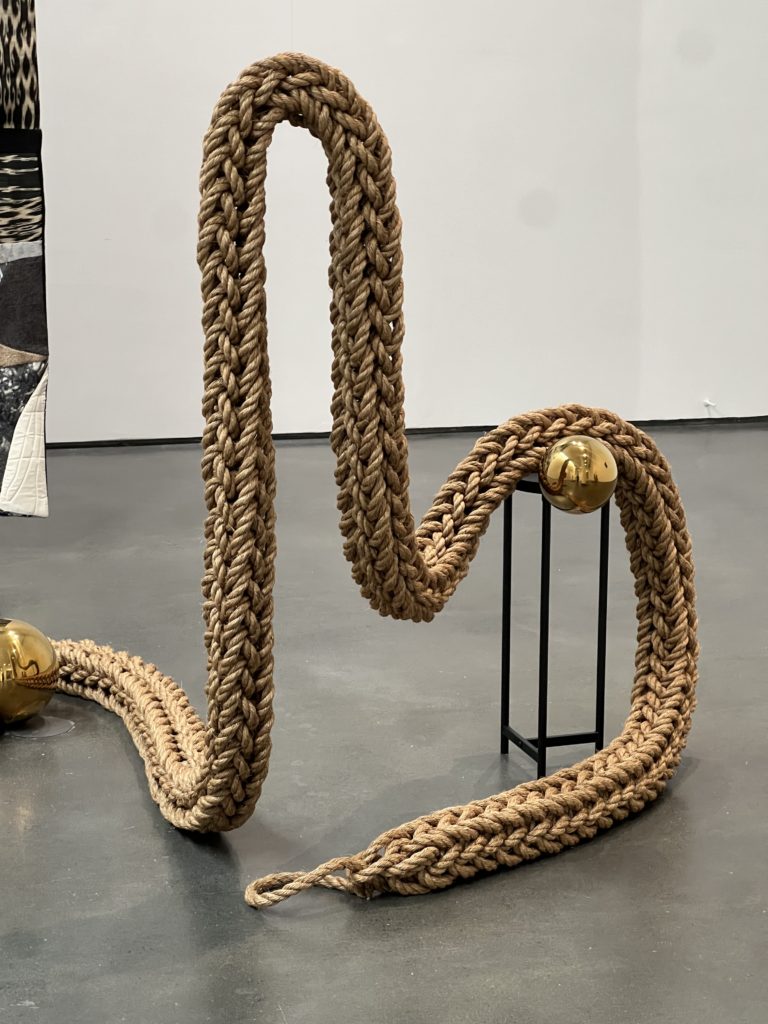
Puntadas para no olvidar
Blue Gallery (222 E 46th St, New York, NY 10017)
On view from Oct 21st until Oct 23rd.
In this exhibition, las Tejedoras de Mampuján present a powerful collection of tapestries created by the women's group known as Tejiendo Sueños y Sabores de Paz, parte de la Asociación para la Vida Digna y Solidaria (ASVIDAS) in Mampuján, Colombia. The weavers have transformed their pain into art, using quilting to make the consequences of the armed conflict in their community visible, especially the displacement of Mampuján, located in the department of Bolívar (northern Colombia, on the Atlantic coast) in the year 2000. These weavings are the bearers of history in an alternative way. They are narrative fabrics that, stitch by stitch, "haciendo el sentimiento objeto"* making visible the effects of war and its consequences. The colorful and vibrant tapestries highlight memory and reconciliation, breaking cycles of violence that date back to slavery. The needles, fabric upon fabric, threads, and drawings become the way to revive their history for self awareness, reconnect with their roots, and release their pain to heal their own and collective memory. In these tapestries, they turn pain into resistance and oblivion into memory.
Curated by Alejandra Mejía Torres
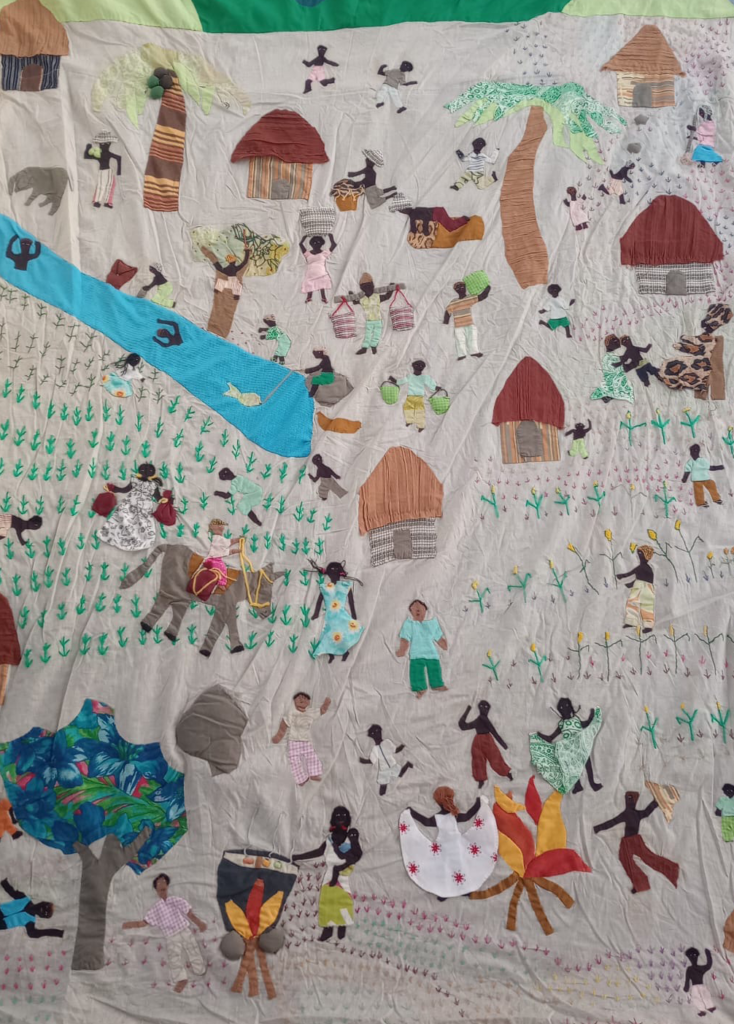
Vida Cotidiana del Cimarron -Tejedoras de Mampuján